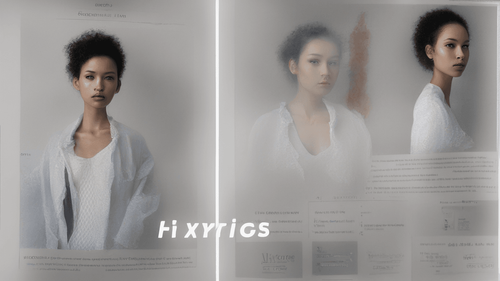
Introduction
In the realm of technological innovation, artificial intelligence (AI) continues to push boundaries and redefine possibilities. A fascinating manifestation of AI's prowess is its ability to transform text into vivid images, a phenomenon that holds profound implications across various industries. In this article, we delve into the captivating world of AI-generated images from text, exploring its mechanisms, applications, and the transformative potential it brings.
AI Makes Images from Text: Unraveling the Process
At the heart of the AI's ability to generate images from text lies deep learning, a subset of machine learning that seeks to emulate human cognitive processes. Leveraging generative models, such as Generative Adversarial Networks (GANs) and Transformer-based architectures like OpenAI's GPT, AI can interpret textual descriptions and translate them into striking visual representations.
The GAN Advantage: Pioneering the Creation
Generative Adversarial Networks (GANs) form the cornerstone of text-to-image generation. This ingenious architecture comprises two neural networks—the generator and the discriminator—locked in a creative duel. The generator crafts images from textual descriptions, while the discriminator endeavors to distinguish between AI-generated images and actual photographs. Through iterative refinement, GANs produce increasingly convincing and photorealistic depictions.
The Transformative Applications of AI-Generated Images
The convergence of AI and visual artistry opens a plethora of innovative applications across industries. From design and entertainment to e-commerce and education, the potential is boundless.
Design Evolution: Bridging Imagination and Creation
AI's ability to conjure images from text revolutionizes the design landscape. Graphic designers and artists can now swiftly conceptualize visual elements based on textual briefs, accelerating the creative process and fostering new dimensions of artistic expression.
Elevating E-Commerce: Enriching Product Visualization
Online shopping experiences stand to be enhanced by AI-generated images. Product descriptions can be translated into lifelike images, enabling customers to visualize items before purchasing. This innovation reduces uncertainty and buyer's remorse, augmenting customer satisfaction and boosting online sales.
Educational Empowerment: Enhancing Learning Engagements
In the realm of education, AI-generated visual aids breathe life into learning materials. Complex concepts can be elucidated through images that precisely correspond to textual explanations, catering to diverse learning styles and promoting deeper understanding.
AI Makes Images from Text: A Glimpse into the Future
The trajectory of AI-generated images is poised for a fascinating evolution, with potential breakthroughs and applications on the horizon.
Artificial Intelligence and Creativity: A Symbiotic Bond
The synergy between AI and human creativity is an exciting prospect. Collaborative efforts between artists and AI can yield unprecedented artistic endeavors, pushing the boundaries of visual storytelling and imaginative expression.
Medical Imaging: A Diagnostic Revolution
The medical field stands to reap significant benefits from AI-generated images. Diagnostic processes can be augmented with images corresponding to textual medical reports, facilitating clearer communication between healthcare professionals and patients.
Urban Planning Visualization: A Blueprint for Tomorrow
Urban planners and architects can leverage AI-generated visualizations to manifest design concepts. Textual descriptions of urban development projects can be transformed into intricate images, aiding stakeholders in visualizing the future cityscapes.
FAQs about AI Makes Images from Text
How does AI convert text to images?
AI employs generative models like GANs to interpret textual descriptions and create corresponding images through an iterative process.
Can AI-generated images match human creativity?
While AI-generated images showcase remarkable creativity, they currently complement human creativity rather than entirely replicating it.
What industries can benefit from AI-generated images?
Various industries, including design, e-commerce, education, and medicine, can harness AI-generated images to enhance their processes and offerings.
Are AI-generated images used for entertainment purposes?
Absolutely, AI-generated images are increasingly used in entertainment, aiding in visual effects, animation, and even video game design.
How accurate are AI-generated images in depicting real-world objects?
AI-generated images have made substantial progress in achieving realism, with GANs producing images that often closely resemble actual photographs.
What ethical considerations surround AI-generated images?
The ethical implications of AI-generated images include issues of intellectual property, authenticity, and the potential for misuse or deception.
Conclusion
The transformative potential of AI in generating images from text is a testament to the extraordinary capabilities of modern technology. As AI continues to evolve, its ability to bridge the gap between language and imagery opens new vistas of creativity and innovation. From streamlined design workflows to enhanced educational experiences and groundbreaking medical applications, AI-generated images hold the promise of a future where the power of imagination finds new forms of expression through the digital realm.